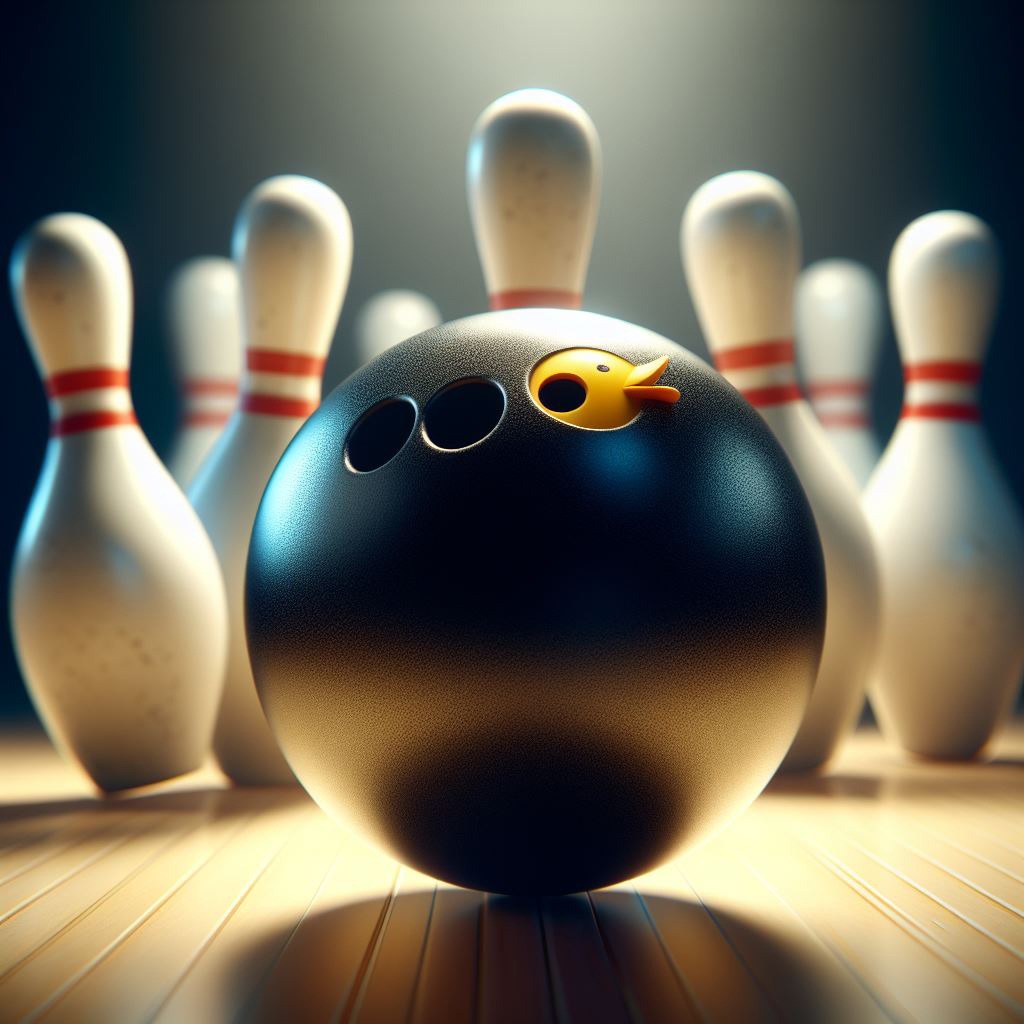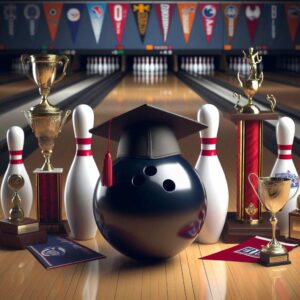Duck pin bowling may seem similar to traditional bowling, but it requires a unique set of techniques and strategies. With smaller pins and a lighter, hand-sized ball, mastering duck pin bowling demands precision, consistency, and a specialized approach.
Whether you’re a seasoned player looking to refine your skills or a newcomer eager to excel in this challenging variation, these essential duck pin bowling tips will help you improve your game and achieve higher scores.
Tip 1: Proper Stance and Approach
Your stance and approach lay the foundation for a successful shot in duck pin bowling. Unlike traditional bowling, where a longer approach is common, duck pin bowling favors a shorter, more controlled approach.
Establish a comfortable stance with your feet shoulder-width apart, knees slightly bent, and your dominant foot slightly ahead of the other. Maintain a balanced and stable position throughout your approach, taking three to five steps towards the foul line.
Keep your shoulders square to the lane, and avoid excessive body rotation during your approach, as it can compromise your accuracy and consistency.
Tip 2: Grip and Hand Position
The grip and hand position are crucial elements in duck pin bowling due to the smaller ball size. Unlike traditional bowling, where you grip the ball with your fingers inserted into the holes, duck pin bowling balls have no holes.
Instead, you’ll hold the ball in the palm of your dominant hand, using your fingers to control the release. Position your thumb on the bottom of the ball, and rest your index and middle fingers on the top, forming a firm yet relaxed grip. Avoid gripping the ball too tightly, as this can lead to inconsistent releases and strain your hand and wrist.
Tip 3: Release and Follow-Through
A smooth and consistent release is essential for accurate shots in duck pin bowling. As you approach the foul line, extend your bowling arm straight toward the target, keeping your wrist firm and your hand positioned behind the ball.
Release the ball by straightening your fingers and allowing it to roll off your hand, imparting a gentle spin. Avoid excessive wrist rotation or snapping motions, as these can lead to erratic ball trajectories.
After the release, follow through with your arm extended toward the target, allowing your body to naturally pivot and complete the motion. A proper follow-through helps maintain balance and improves shot consistency.
Tip 4: Aiming and Targeting
Accurately targeting the strike pocket is crucial in duck pin bowling, as the smaller pins and ball size leave little room for error. When aiming, focus on the center of the pocket, which is the area between the front pin (the 1 pin) and the second row of pins.
This spot offers the highest probability of achieving a strike or leaving a manageable spare. Use the arrows or markings on the lane as visual guides to align your approach and release. Additionally, pay attention to the lane conditions and adjust your target area accordingly, as oil patterns and lane transitions can affect ball motion.
Tip 5: Ball Selection and Maintenance
Choosing the right duck pin bowling ball and maintaining it properly can significantly impact your performance. Duck pin bowling balls are typically lighter than traditional bowling balls, ranging from 2.5 to 3.5 pounds.
Select a ball weight that allows you to maintain control and consistency throughout your approach and release. Consider your strength, hand size, and personal preferences when choosing the ideal weight.
In terms of cover stock, duck pin bowling balls typically feature a dull or matte finish, which provides better traction and control on the lane surface. Regular cleaning and resurfacing of your ball are crucial to maintain optimal performance.
Use a ball cleaner specifically designed for duck pin bowling balls, and consider having your ball resurfaced by a professional every few months to restore its original traction and reaction characteristics.
Tip 6: Lane Conditions and Adjustments
Understanding and adapting to different lane conditions is a vital skill in duck pin bowling. Lane conditions can vary due to factors such as oil patterns, humidity, and the number of games played on a particular lane. Observe how your ball reacts on different parts of the lane and make adjustments accordingly.
If your ball is hooking too much or too little, consider moving your starting position slightly to the left or right to find a better line to the pocket. Additionally, adjusting your ball speed or release angle can help you compensate for changing lane conditions. Don’t be afraid to experiment with different approaches and adjustments during your game to find the optimal line and shot execution.
Tip 7: Spare Shooting Techniques
Consistently converting spares is crucial for achieving high scores in duck pin bowling. When faced with a spare situation, take a moment to analyze the pin leave and determine the best approach.
For clusters or corner pins, consider using a straight ball path or a slight hook to knock down the remaining pins. For more challenging splits or spreads, you may need to adjust your target area or use a more precise release angle to navigate through the gaps.
Practice different spare shooting techniques during your warm-up sessions or dedicated practice sessions. Mastering various spare conversions will not only improve your overall score but also boost your confidence in high-pressure situations.
Tip 8: Mental Preparation and Strategy
Duck pin bowling demands not only physical skills but also mental fortitude and strategic thinking. Before each game or session, take a few moments to clear your mind and focus on your goals and game plan. Visualize successful shots, and maintain a positive mindset throughout your performance.
During the game, pay attention to your opponent’s playing style and adjust your strategy accordingly. If your opponent is consistently leaving certain pin leaves, adapt your shots to take advantage of their weaknesses. Additionally, stay composed and avoid letting missed shots or unlucky breaks negatively impact your focus and confidence.
Tip 9: Practice and Drills
Regular practice and targeted drills are essential for improving your duck pin bowling skills. Dedicate time to practicing specific techniques, such as spare shooting, release consistency, and lane adjustments. Consider investing in practice aids, like a bowling ball spinner or target trainer, to help refine your release and accuracy.
Joining a duck pin bowling league or seeking coaching from experienced players can also be invaluable. Receiving feedback from knowledgeable instructors and observing skilled players can provide insights into areas for improvement and help you develop a deeper understanding of the game.
Tip 10: Equipment and Accessories
In addition to a quality duck pin bowling ball, consider investing in specialized equipment and accessories to enhance your performance and comfort.
Duck pin bowling shoes with proper traction and slide soles can improve your footwork and prevent slips during your approach. Bowling towels help keep your hands dry and maintain a secure grip on the ball, especially in humid conditions.
Other useful accessories include ball cleaners, ball polishes, and ball revivers to maintain your equipment’s optimal condition. Additionally, consider using a wrist brace or support for added stability during your release and to prevent potential injuries.
Conclusion:
Mastering duck pin bowling requires a combination of proper technique, strategic thinking, and consistent practice. By implementing these 10 essential tips, you’ll be well on your way to improving your game and achieving higher scores.
Remember, duck pin bowling is a unique and challenging variation of the sport, so be patient with yourself and embrace the learning process. Continuously refine your skills, experiment with different techniques, and stay dedicated to your practice routine. With time and commitment, you’ll develop the precision and consistency necessary to excel in this exciting and rewarding game.
For further guidance and additional resources, consider joining a local duck pin bowling league or seeking instruction from experienced coaches in your area.
The duck pin bowling community is a welcoming one, and surrounding yourself with knowledgeable players can provide valuable insights and support on your journey to becoming a skilled competitor.
So, grab your duck pin bowling ball, step onto the lanes, and put these tips into practice. With determination and a love for the game, you’ll soon be knocking down those small but formidable pins with ease and achieving personal bests in no time.





